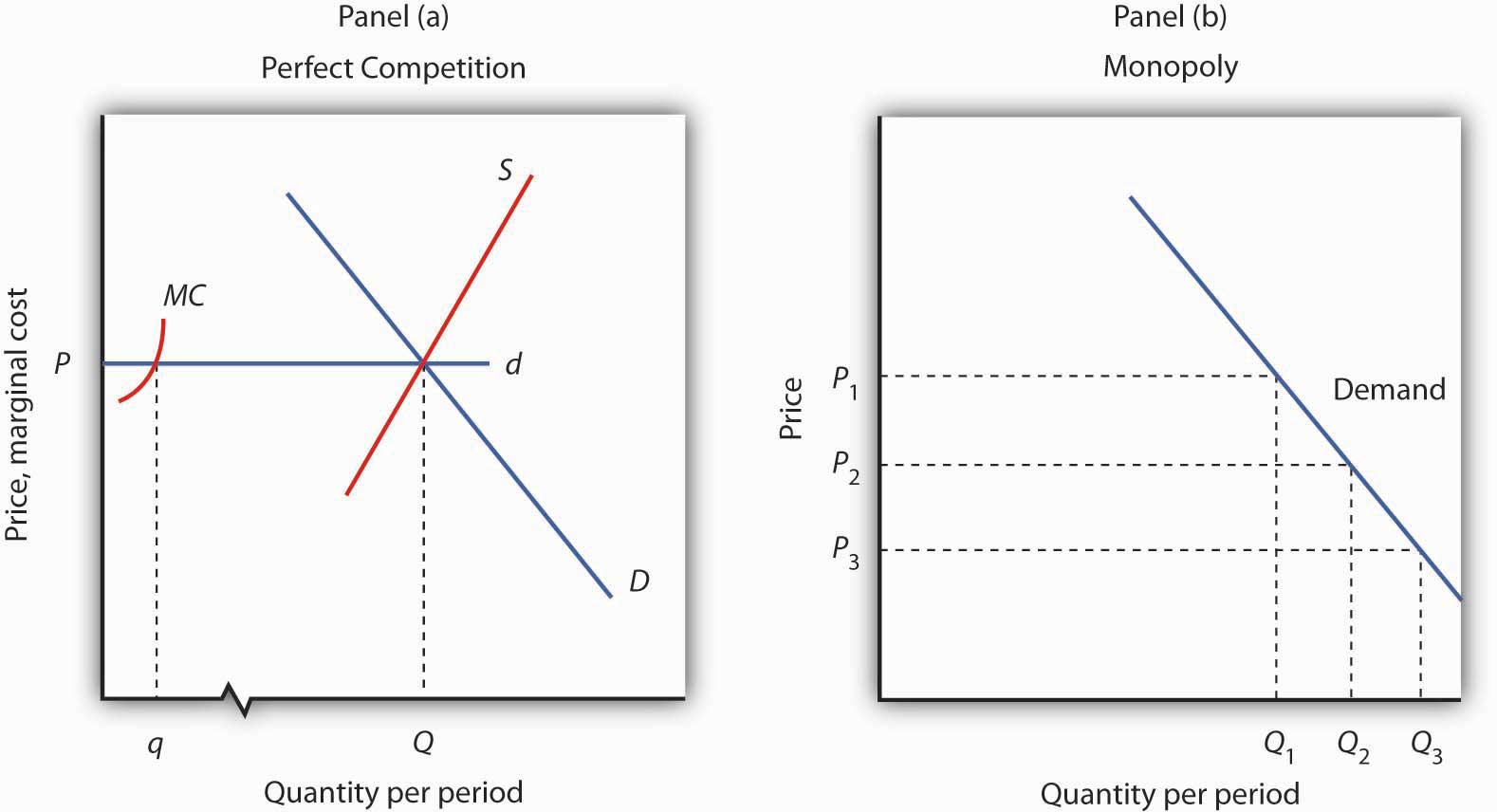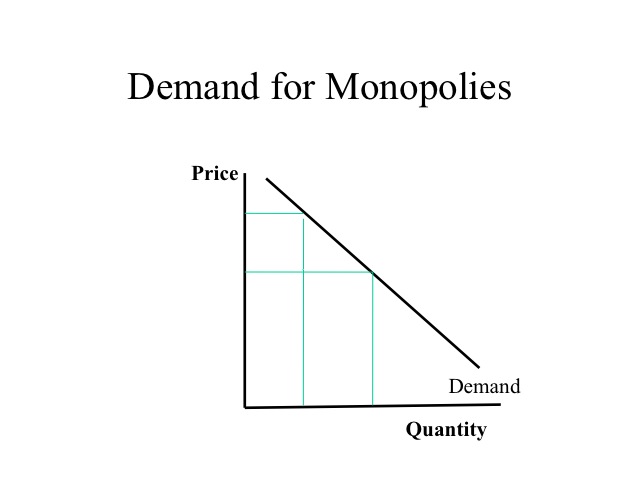The Demand Curve Faced by a Pure Monopoly Is
The Demand Curve for a Monopolistic Market is of the same form as a regular Demand Curve. More elastic than the demand curve faced by a perfectly competitive firm.

Pure Monopoly Demand Revenue And Costs Price Determination Profit Maximization And Loss Minimization
Perfectly inelastic perfectly elastic.

. The same as the industrys demand curve. 3 Explain why the marginal revenue is equal to the price in pure competition but not in monopoly. The demand curve faced by a non discriminating pure monopoly is same as the industry demand curve as the monopoly facing the demand curve of the industry in the form of the downward sloping demand curve so that the monopolist increased its output demand.
Inelastic perfectly elastic b. The demand curve faced by a pure monopolist. A non discriminating monopolist determined the demand curved and ultimately determined the price.
Is less elastic than that faced by a single purely competitive firm. The demand curve that the monopolistic firm faces is the market demand curve. Is less elastic than that faced by a single purely competitive firm.
Has the same elasticity as that faced by a single purely competitive firm. Asked Jan 12 2020 in Economics by doctor_who. Demand faced by a pure monopoly is____.
Demand curve faced by Nuclear plant a monopoly shall be _____ and for a wholesaler in flower market it will be _____ a. The demand curve faced by a pure monopolist. Elastic perfectly elastic c.
The demand curve faced by a nondiscriminating pure monopoly is A More elastic than the demand curve faced by a perfectly competitive firm. Explain why the marginal revenue is equal to the price in pure competition but not in monopoly. Perfectly elastic inelastic d.
If the government regulated the pure monopoly and made it set a normal profit price what price and quantity of output levels would we observe in the short run. Is less elastic than that faced by a single purely competitive firm. The demand curve faced by a pure monopolist.
Change in total revenue change in quantity. Asked Aug 6 2018 in Economics by lrshen. Derived by vertically summing the buyers individual demand curves.
Compute marginal revenue when given a monopoly demand schedule. Downward sloping indicating that higher quantities are demanded at lower prices lower Q are demanded at higher prices. The demand curve faced by a pure monopoly is _____.
May be either more or less elastic than that faced by a single purely competitive firm. May be either more or less elastic than that faced by a single purely competitive firm. The demand curve faced by a pure monopoly is _____.
The demand curve faced by a pure monopolist is of downwardsloping in shape. It can search the market demand curve to find the price that maximizes its. You will recall that the market demand curve is downward sloping reflecting the law of demandThe fact that the monopolist faces a downwardsloping demand curve implies that the price a monopolist can expect to receive for its output will not remain.
Economics questions and answers. It does not have to take the given price. The Demand Curve intercepts the x-axis twice as far down the x-axis as where the Marginal Revenue curve intercepts the x-axis.
It is downward sloping because of the Substitution Effect the Income Effect and the Law of Declining Marginal Utility. 4 Use the chart to solve the following. The change from the old demand curve to the new demand curve shown in the table represents a.
Has the same elasticity as that faced by a single purely competitive firm. D The same as the industrys demand curve. Use the following graph to answer the next question.
BHorizontal C Derived by vertically summing the buyers individual demand curves. At its profit-maximizing output a pure nondiscriminating monopolist achieves. Therefore the demand curve for a monopolistic firm takes a downward slope whereas that of a perfectly competitive firm is horizontal Arnold 2014.
1 List the five characteristics of pure monopoly. The demand curve faced by a non-discriminating pure monopoly is the same as the industrys demand curve A non discriminating pure monopoly must decrease the price on all units of a product to sell more units. A pure monopolys marginal revenue curve is below its demand curve.
May be either more or less elastic than that faced by a single purely competitive firm. A pure monopoly has a perfectly elastic demand curve a pure monopolys marginal revenue curve is below its demand curve Many people believe that pure monopolies charge any price they want to without affecting sales. Calculate the Marginal Cost at Q.
Because the monopolist is the markets only supplier the demand curve the monopolist faces is the market demand curve. See answer 1 Best Answer. Describe the demand curve facing a pure monopoly and how it differs from that facing a firm in a purely competitive market.
2 Describe the demand curve facing a pure monopoly and how it differs from that facing a firm in a purely competitive market. For a pure nondiscriminating monopolist marginal revenue is less than price because. Suppose a pure monopolist is faced with the demand schedule.

10 2 The Monopoly Model Principles Of Economics

Pure Monopoly Demand Revenue And Costs Price Determination Profit Maximization And Loss Minimization


Comments
Post a Comment